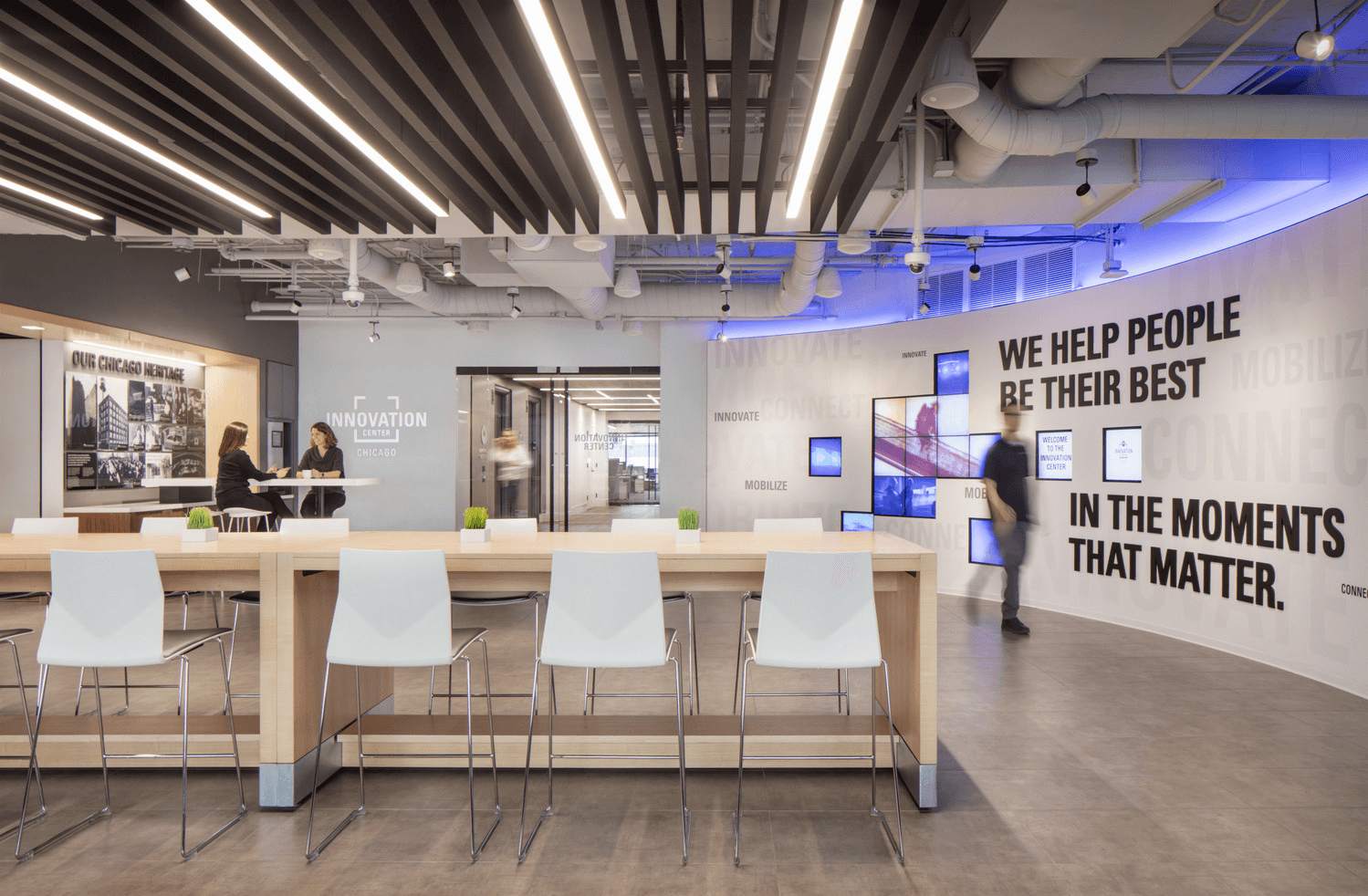By Annelle Stotz, SEGD, AIGA | Senior Director of Experiential Graphic Design
&
Julie Maggos SEGD, LEED AP | Senior Director of Experiential Graphic Design
As designers, new technologies are changing the way we work and create the experiential impact of the built environment. Using new apps, AI, VR, building information modeling, and an ongoing stream of new and updated software and hardware, we visualize concepts and data that inspires us to shape dynamic, bespoke experiences that engage users on multiple levels: intellectual, informational, emotional, and through the senses—sight, sound, touch, etc.
Technology Driven
Developing technologies offer new options for designing experiences within spaces. For instance, with modeling programs we have mastered the creation of anamorphic graphics—painted graphics that span across ceilings and floors and are meant to be viewed from a single vantage point where they resolve into a perfect image. From any other vantage point, they are seen as a group of skewed shapes that appear to be floating in space.


On stairs, anamorphic graphics mark floors and provide interest. Confidential Client, Milan, Italy. Photography © Giulia Parmigiani.
Translating sound into other mediums with the help of technology is another option. For identity authorization specialists Okta, the IA team recorded the tag line Okta Always On. Using software, IA translated the sound waves into a static pattern expressed by a graphic string art installation. Tim Huey, IA environmental graphic designer for the project says, “This installation was the perfect way to translate an abstract concept into something physical. Located in the meetup area of the floor, the art piece serves as a visual landmark for Okta employees that reinforces their culture and celebrates brand.”

Sound waves generated by an Okta tag line translate into a string art installation.
Okta, San Francisco.
We also use technology to create generative graphics that can be manipulated and implemented in more traditional ways within a space. For Jet.com, IA designed a dynamic visual pattern from re-rendering their logo and products and then printed it as a wallcovering. Applied to a flat wall as a design element it enlivens and references the brand.

Re-rendering the Jet.com logo and products using generative graphics created a pattern for a wallcovering.
More and more beyond their function as tools, new technologies inspire us to articulate new concepts that are integral to the final output. Examples include digital walls, motion graphics, and interactive and reactive installations, engaging experiences that will be more widely used in 2019. We expect to see more video arrays, projection mapping, augmented reality, and dynamic content now and going forward.

The LED interactive technology wall along the stairs responds to the movement of members passing by at a fitness center for a confidential client. Confidential Client, Louisville, KY. Photography © Tom Harris.
There are many benefits—flexibility, updatability, options for interaction—to designing a workplace using a variety of digital features and installations. Furthermore, these features have two very important purposes: facilitating in-person human interaction and providing relevant information.

In a common area, an interconnecting stair and two-story video wall enhance communication and interaction at Big Fish Games Headquarters. Photography © Sherman Takata
A continued desire and need for balance between screen, tactile, and other visual experiences is anticipated. But much like the paradigm shift to open office design, we know that one size will not fit all. Today’s workspace houses a combination of spaces. Within those spaces a variety of tools and features when integrated thoughtfully and dynamically will exponentially increase an organization’s ability to be productive, happy, and connected.

A curved digital wall enhances an open area. Confidential Client, Chicago. Photography © Darris Lee Harris.
Of course, having all these resources at our fingertips is like being the kid in a candy store who wants to try out everything. We continue to test the boundaries of what is possible to best meet our clients’ objectives with new and innovative solutions. Along with all these new tools, the solutions we provide are evaluated for functionality, relevancy, and most importantly, their human centric value.

An interactive technology wall that tracks and responds to subtle body movements in real-time—a design feature in many IA projects—contributes to the experience in IA’s New York Office. Photo © Eric Laignel.


